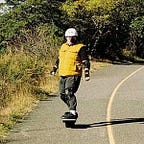Exploring Combinatorics with Blackjack!
I wrote this code to explore some interesting questions about combinatorics that I started coming upon while reading Edward Thorp’s autobiography about his career as the inventor of modern card counting.
In one chapter he recounts the story of his first attempt to test his card counting system, in which he pulled a 7-card 21. He said this was a rare event. I was immediately nerd sniped. How rare exactly?
Well it turns out that 52 choose 7 = 133,784,560. So there are over one hundred million possible 7-card hands. But how many of them are worth 21?
Well first I needed to write a method to calculate the score of a given hand, unfortunately the Ace can take on two possible scores, so I had to dynamically detect the highest non-busting score. The final foldRight is needed to ensure that there is a score of 0 for any busting hand:
def handScore(hand: Set[Card]): Int = {
hand.foldRight(Set(0))((card, possibleScores) => {
card.rank.values.flatMap(value => {
possibleScores.map(_ + value)
})
})
.filter(_ <= target)
.foldRight(0)(_ max _)
}Finally then this was just a matter of selecting all subsets of size 7:
FullDeck.fullDeck.subsets(7).count(handScore(_) == target)And it turns out the answer is….48,276. And that took my laptop 11 minutes!
So the answer of how rare of an event this was, it will occur in only 0.03% of 7-card hands!
BUT WAIT A MINUTE! It turns out that most of the time when you get to 7 cards you’ve already busted.
So how common is it for a 7-card hand to be a 21 AMONG LEGAL 7-card hands? We can also do that calculation.
It turns out there are 121,960 legal 7-card hands:
FullDeck.fullDeck.subsets(7).filter(handScore(_) != 0)So actually given that I have 7 cards and I’ve not yet busted, there’s a fairly good chance (48,276/121,960 ~= 40%) that I hit 21. Which makes sense, as your hand gets bigger there are fewer and fewer possible scores you can hit. For instance assuming a single deck the lowest possible score with 7 cards in your hand would be 10 (all four aces plus three twos).
Isn’t it amazing that Edward Thorp was able to do all this in the 1960s using FORTRAN!?
Originally published at https://github.com/djohnkirby/blackjack.
